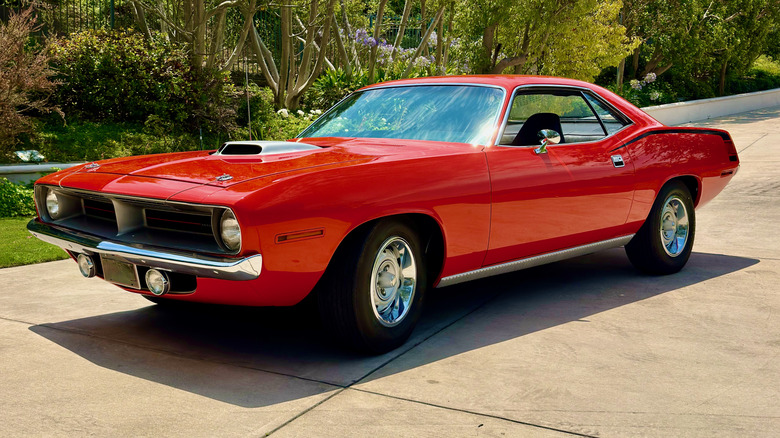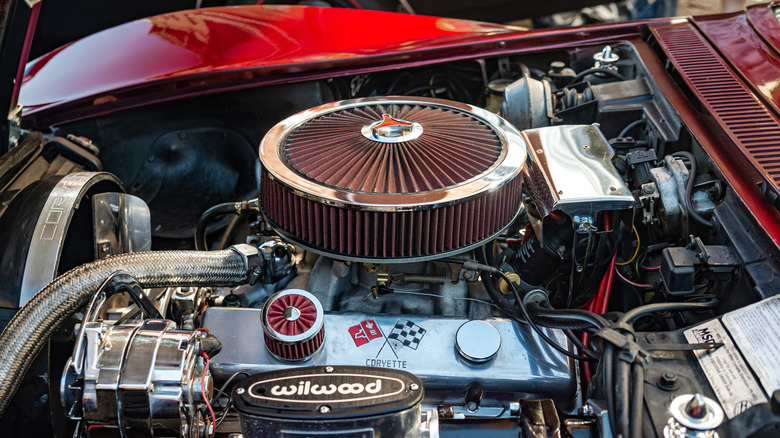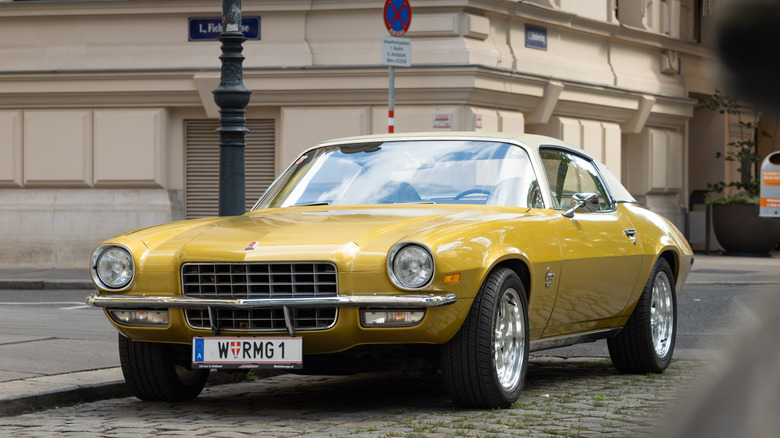Why Did Cars Have Less Horsepower In The 1970s?
The golden age of muscle cars is arguably one of the most beloved eras for any American vehicle enthusiast. Toward the tail end of the 1960s, massive engines like Oldsmobile and Pontiac's 455-inch V8s dominated the roads, and the unique 1969 Ford Mustang came in a Boss 429 version that made 375 horsepower and 450 pound-feet of torque. While the power output from all these vehicles was quite healthy, the emissions were not. You see, gas from the past contained lead additives meant to raise the octane levels. The lead allowed engines to run at higher compression ratios without knocking, which in turn blessed the cars of that time with more power. However, the lead from burned fuel was released into the environment, and when inhaled it caused a myriad of health issues including developmental issues in children, cancer, and strokes.
The first federal Clean Air Act was passed in 1963, and was amended two years later to include provisions for reducing pollution from cars. The 1967 Air Quality Act facilitated greater involvement from the federal government, including an expansion of monitoring, inspections, and enforcement. These regulations didn't do much, so in 1970 President Richard Nixon established the Environmental Protection Agency and Congress passed a more powerful Clean Air Act. Both of these actions resulted in new regulations that eventually sapped American cars of much of their horsepower. They included a ban on leaded gasoline, new corporate average fuel economy standards, and even a change in how horsepower was calculated.
Lead was out as a fuel additive
Although the laws passed in the 1960s focused on air pollution, they did not significantly impact the automotive industry. It wasn't until the '70s that the effects of emissions control regulation on horsepower began to take effect. By 1975, catalytic converters were required on all cars sold in the United States, essentially ending the use of leaded fuel (lead destroys the catalysts, rendering the converter useless). The outdated valvetrain architecture of many older engines meant they needed the octane boost from lead to run at high compression rations without knocking. Lower compression ratios — and reduced power output — became the norm. The EPA also focused on reducing hydrocarbons and nitrogen-based air pollutants, forcing manufacturers to rework their engines to accommodate new emissions control technologies, such as three-way catalytic converters. Although these developments reduced the amount of harmful gases released into the air, they compromised the horsepower output of most engines.
Alongside the emission regulations, horsepower ratings were switched from gross to net in 1972. Gross horsepower did not consider the power loss from equipment connected to the engine like water pumps, superchargers, or exhaust. By contrast, net horsepower factored in this loss, resulting in a lower value than gross horsepower. For instance, the Cadillac Eldorado's 500 cubic inch V8 experienced a significant horsepower drop, from 365 gross to 235 net.
The oil crisis was also a factor
The 1973 oil embargo was yet another nail in the coffin of high-horsepower American cars. The Arab-Israeli War was escalating, and the U.S. — which had grown dependent on foreign oil — faced an embargo imposed by the Organization of Petroleum Exporting Countries (OPEC) for its support of the Israeli army. The result was a massive shortage of gas that led to long lines at the pumps and prompted many Americans to begin favoring fuel efficiency over performance. Of course, it didn't stop there. Corporate Average Fuel Economy (CAFE) standards went into full effect in 1975.
This program set specific average miles per gallon targets for manufacturers, leading to the development of smaller, more fuel-efficient engines. Most automakers had to reduce displacements and vehicle size to comply with the new standards, and you can already guess the outcome. Even before buyers had moved from full-sized beasts like the Chevy Impala to smaller foreign-made options, American automakers were force to equip their cars with horsepower-sapping smog control equipment. Fortunately for car enthusiasts, industry engineers have since caught up with the new standards, and there are plenty of new cars that prove that the horsepower wars are once again out of control.


